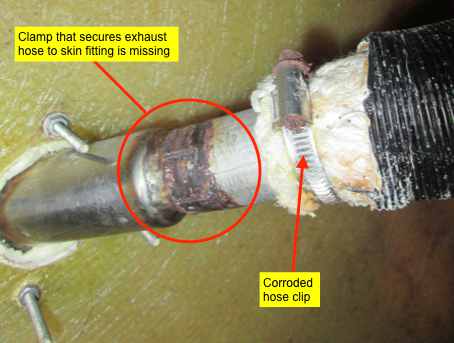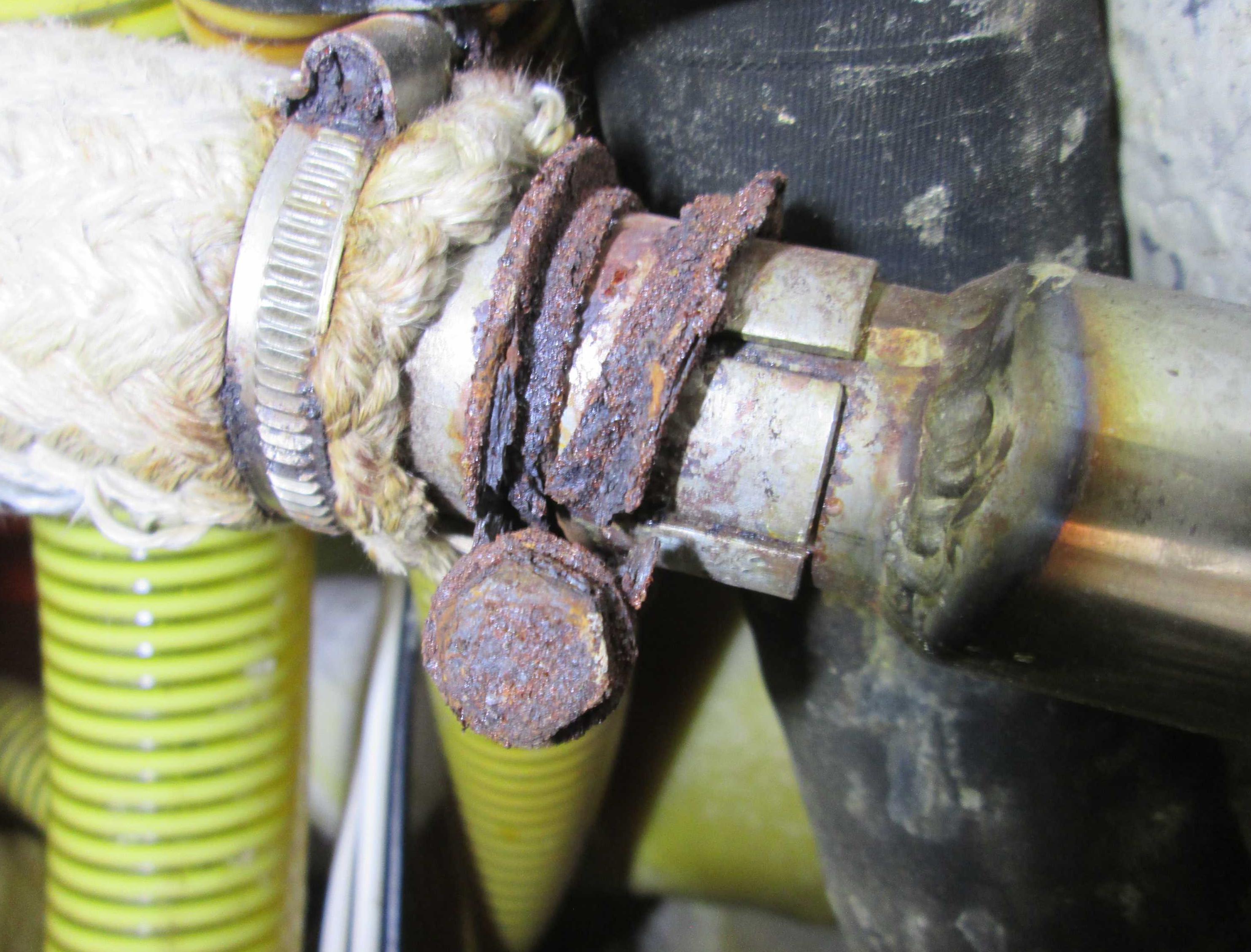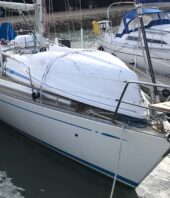There’s a wide choice of good quality diesel-powered space heaters these days, but in my surveys, I often find that the problem lies with the quality of the installation of the heater units. The positioning and securing of the lagged exhaust pipes is not always up to standard: Poor quality pipe clamps, missing pipe clamps (or maybe they corroded and fell off) and lagged pipes positioned too close to compartment insulation or GRP mouldings. The attached photos show just some of the nasties that I have found in cockpit lockers and engine compartments. The photo of the missing clamp was taken shortly after the unit had been serviced by an authorised agent. If I hadn’t found this defect during the survey of the vessel, the boat may well have sailed for another ten years without the Owner being aware that his heater was poorly installed and in an un-safe condition.

The heater exhaust clamp was missing, possibly after having corroded and fallen off
Maybe the manufacturers of these products could take an idea from the Defence & Aerospace Industry: Where threaded fasteners are used to secure an item, these are often of the ‘captive’ variety. This means that when the screw is un-fastened, it won’t fall out and disappear inside the aircraft, submarine, or in the case of boat heaters, into the bottom of a wet, dark bilge. Judging by the quality of some of the non-stainless steel hose clamps that I have seen on heater exhaust pipes, I can only assume that the Fitter has lost the original pipe clamp in the vessel’s bilge, or in the back of his van, and has simply fitted an inferior equivalent clamp. If the original clamps were integral to the heater unit and the skin fitting, there would be no chance of these crucial items going missing and this would reduce the likelihood of poor quality clamps being used in their place. These would cost more to manufacture, but it would be justifiable in passing this cost on to the consumer as the durability and security of these clamps is of significant importance when ensuring that the heater units remain safe throughout their life.

This exhaust pipe was secured to the skin fitting of the transom by a carbon steel hose clamp. When found, the band of this clamp was almost entirely wasted

This lagged heater exhaust pipe was routed too close to the sound insulation of the vessel's engine compartment and had nearly burnt through to the GRP moulding of the saloon sole. The vessel was built in 2013, therefore you would expect the heater to have been installed according to modern safety standards
Whether my survey inspection finds the diesel heater unit to be well installed or poorly installed, I always recommend that the vessel is fitted with one or two Carbon Monoxide alarms. These units are a potential life saver, but they are no substitute for a correctly installed and well maintained fuel-burning heater unit.




9,781 Responses